In the occupied West Bank, Palestinians living near extremist settlements have been seeing a drastic increase in violence. Israeli authorities refuse to take responsibility, while the villagers are left to fend for themselves.
By Rami Younis and Oren Ziv
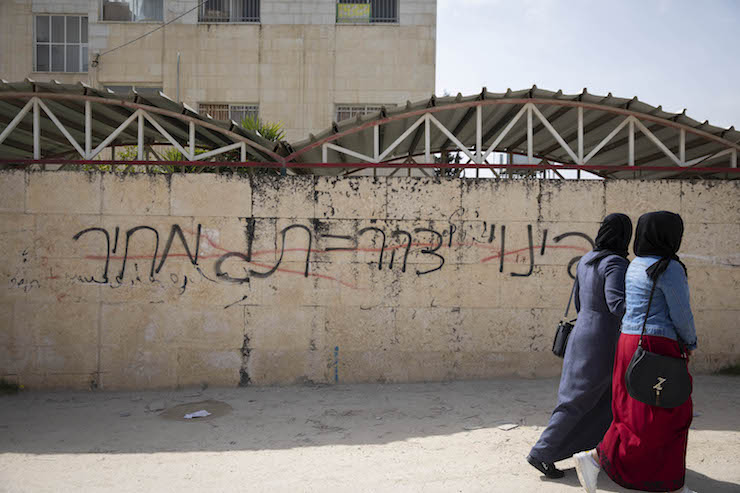
This past year was, by all accounts, a difficult one for Palestinians living near settlements in the West Bank. According to data provided by the Palestinian Authority’s Wall and Settlement Resistance Committee, 2018 saw 614 settler attacks against Palestinians, ranging from property damage to stone throwing and lethal assault.
This constitutes an increase of 217 percent compared to the previous year; 2017 saw 284 incidents of assault, while the PA recorded 255 such incidents in 2016. As of early March, the committee documented 125 assaults — an average of more than two incidents per day.
The attacks, once referred to as “price tag attacks,” are committed by extremist Jewish youth from settlements and outposts across the West Bank. Their goal is to exact a price from Palestinians for actions Israeli authorities take against the settlers, usually building enforcement in illegally built settlements. The attacks are sporadic and difficult to combat in real time.
Settler violence has steadily increased since the middle of last December, when Asam Barghouti stepped out of his car and opened fire at a group of soldiers and civilians waiting along Road 60 at the entrance to the settlement outpost of Givat Assaf. Two soldiers were killed in the attack, and another soldier and a civilian were wounded. Following the incident, far-right MK Bezalel Smotrich tweeted: “If there are terror attacks, we won’t have Arabs on the roads.”
Meanwhile, settlers from across the West Bank set off on a campaign of revenge. In the 24 hours following the Givat Assaf shooting, Israeli anti-occupation organization Yesh Din recorded attacks in 28 locations across the West Bank, from the Nablus area in the north to Hebron in the south. Ever since , Palestinians have been reporting an increase in settler violence. The main victims are those living next to Route 60, and particularly in villages near the settlement of Yitzhar — known for its extremism — and the settlement outposts around Shiloh, northeast of Ramallah.
It is difficult to obtain data from the Israeli side. Most incidents are not reported or are designated by the army as “confrontations” (in many cases the army arrives at the site after the settlers leave, and clashes take place between the army and Palestinian youth). B’Tselem, another Israeli anti-occupation group, investigated 129 of the violent incidents in 2018, in which four people were killed and sixteen were wounded. We tried, to no avail, to obtain information from the army and the police regarding the number of settler attacks. The Shin Bet referred us to the police, the police referred us to the army, which then sent us back to the police. No one knows — no one takes responsibility.
Layers of protection
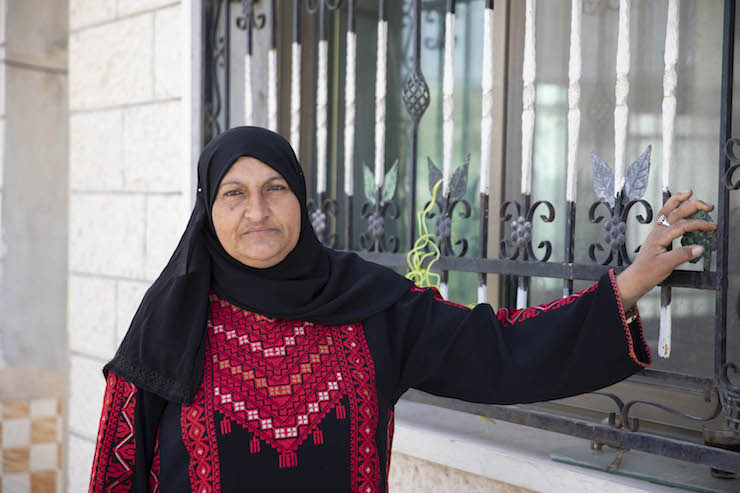
“It was completely random — that’s what was so scary,” says Rumel Sweiti, the editor in chief of the Al Hayat daily, which is published in Nablus. Sweiti, who routinely reports on the attacks, was himself the target of assault in early February. “It happened around 10 p.m. near my house in Huwara,” just few miles from Yitzhar. “My house is in the northern part of the village, where the settlers have attacked many times,” Sweiti adds. “They entered my yard and smashed three parked cars. I complained to the Palestinian police, now we are going to the Israeli police.”
Sweiti has been attacked twice before, as have the houses of his brothers who live nearby — but this time, he says, it feels different. “Ever since the Aisha al-Rabi incident (a Palestinian woman killed by settler who threw a stone at her car, R.Y., O.Z.) [the settlers] no longer have any fear or respect for the sanctity of the Sabbath. Now they are entering people’s backyards, which they did not do before, even on the Sabbath.”
Not far away in Urif, a village of some 4,000 people located in the shadow of Yitzhar, the inhabitants say settlers have been trespassing on their land almost every single day since the shooting at Givat Assaf. They also say that while in the past settlers would throw stones from a distance, today they are entering people’s yards.
One of these houses belongs to Munir Suleiman, a father of 10 who makes a living collecting scrap metal. The back yard of his modest home — where the windows are now protected by metal bars, thanks to the help of the villagers and the local council — is full of old motorcycles and automotive parts, some of which have been smashed by settlers. “They will do anything to prevent me from earning a shekel, anything!” he says. Suleiman walks with a limp, a souvenir from a previous settler attack.
He shows us the dilapidated house, located at the edge of the village near the high school, where his children live. He long ago decided to block the house’s window with stones and concrete. The local council built a fence around the house, which does little to prevent attacks.
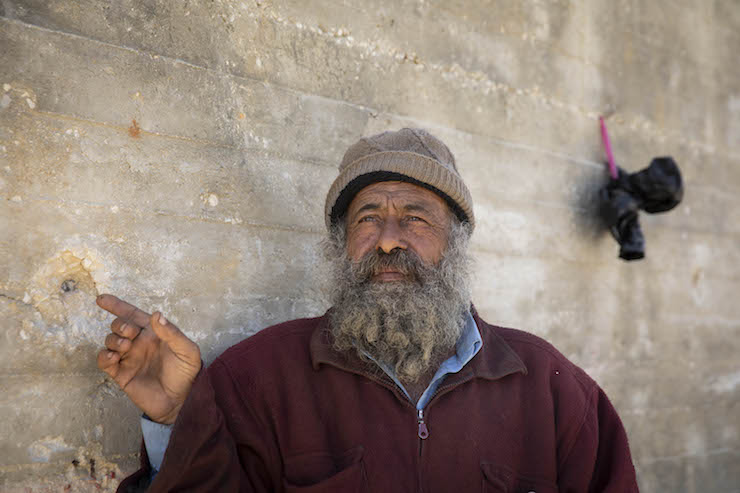
Every house in the area has bars that were installed when the house was initially built, as well as an extra layer of protective black bars that give the homes a prison-like appearance. On top of the bars is a metal mesh, meant to prevent stones from breaking through. Suffice it to say that none of this has helped. “They often use metal rods that cut through the mesh and break the windows despite the bars” says Munir Qadasi, a field worker from Yesh Din who comes here several times a week to document attacks.
On our tour of Urif we are joined by Muntasar Safadi, who works for the local council. He lifts his pant-leg over his ankle, revealing a wound he sustained after being shot by live fire during a demonstration three months ago. Qadasi and the other inhabitants point to the walls of the village houses, which are now pocked with bullet holes. “Sometimes they come down with the army, sometimes the army joins later, after the entire village comes out to defend itself. Then the live fire begins,” says Safadi. Suleiman sits down in his yard next to a small decrepit chicken coop, telling us about one incident in which a bullet nearly missed his head while sitting in the very same spot.
The villagers say they have tried to install security cameras, but the army immediately arrives to confiscate the film following attacks. The army does not do this in order to stop the settlers, they say, but rather to identify the young Palestinians who come out to defend their land and confront the attackers.
Several months ago, the PA held discussions about the possibility of establishing people’s defense councils in every village. But operating the councils would be dangerous and problematic: even if activists are not immediately detained by Israel, the councils would require the PA to both pay salaries and provide for other resources. “All this talk about the councils is irresponsible,” says Qadasi. “They want the young people to risk their lives and protect us from the settlers with their bare hands — without weapons and without salaries? It’s not going to happen.”
In the meantime, the inhabitants of Urif protect themselves with WhatsApp groups. “Even at 5 a.m. when someone sends an alert, you will see all the villagers coming to fight off the settlers within a few minutes,” Safadi says.
“I am afraid to complain and attract attention to my house,” tells us Samir Sawalma, a retired teacher who lives near Suleiman. “I am originally from Jaffa, after the Nakba we moved to Balata refugee camp. In 2000 I moved here to escape the mess there…” Suleiman does not finish the sentence, instead gesturing with resignation as he points to the reinforced windows of his house. Often, he says, he misses a doctor’s appointment so as not to leave his house empty. He shows us a note he has for a doctor’s appointment for the exact time we are sitting together in his yard. “I am a refugee and therefore get my health care in the camp, but the doctors are very busy. There are not enough appointments and it is important to take any available slot. But how can I leave my wife and children alone?” While we are sitting at the yard, a commercial truck stops outside the gate and the driver honks the horn repeatedly. Sawalma goes out and hugs his son who has just returned from school in the truck.
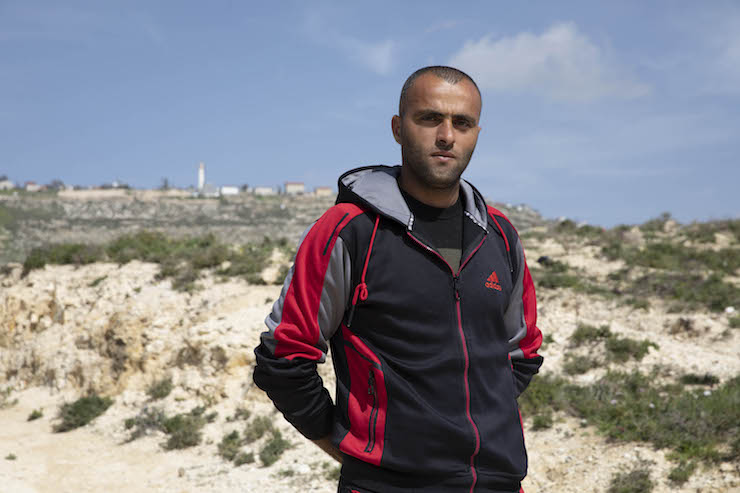
“Did you notice what is going on here?” asks Safadi as he lights another cigarette. “The drivers are afraid to let the children out of the car alone without a parent to let them into the house. They fear a settler could be lurking, lying in wait for the children. As far as the driver is concerned, he could be honking the horn for another hour and not let the child exit the vehicle alone.”
The distance between the high school and Yitzhar is only a few hundred feet, as the crow flies. The settlers from Yitzhar often attack the school, and when the students come out to stop them, the army arrives and disperses them with tear gas, rubber bullets, and sometimes with live fire. Dozens of tear gas canisters can be seen strewn on the ground, a testament to the frequent confrontations here.
Buy during the day, attack during the night
Huwara, a town of 9,000 inhabitants located on Road 60 between Za’atra (Tapuah Junction) and Nablus, has also been a frequent target of demonstrations and attacks by the settlers. From the yard of city hall, we can see the military post situated between Yitzhar and Huwara overlooking the area. On top of the military post flies a yellow flag with the word “Messiah” on it, most likely hoisted by settlers. The Palestinian farmers who come to work their land are required to coordinate their arrival with the Israeli army ahead of time. Access to some plots is denied throughout the year.
“Now begins what we call ‘the coordination season,’” says Hawara Mayor Nasser Hawari. “We help local farmers receive confirmation from the army so they can access their land between Huwara and the settlement. Spring is approaching, and people need to plow their land, but we know that the settlers will arrive and make trouble.”
Hawari, a man with a ready smile, grows serious when I ask him about what happened during last year’s plowing. “The settlers know to wait for us when we come down to our land — it’s like an annual ceremony. Last year, 35 settlers from Yitzhar attacked the farmers with stone and rods as the army looked on. They ruined my car, elderly people were hit on the head with stones, and a young man working on a tractor suffered a panic attack and stopped breathing. It was a miracle he survived.”
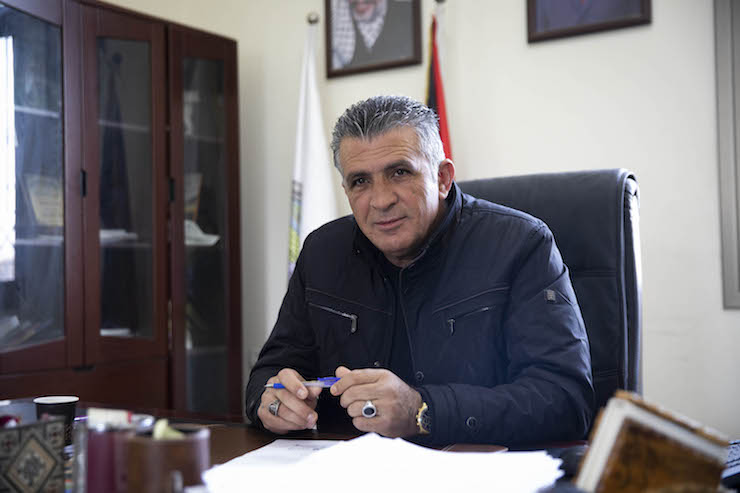
Not far from city hall is a girl’s elementary school, which was the target of a settler attack in November 2018. On the wall, settlers spray-painted the words “Yitzhar’s Evacuation — Price Tag.” The residents tell us that the night the school was attacked, settlers slashed the tires of several tractors belonging Bilal Hajj Jaber, who sells construction materials. When we visit him, a settler from the area is finalizing his purchase, while a teenage Palestinian loads the merchandise onto the settler’s jeep. “They buy during the day and attack at night,” says Qadasi. Hajj Jaber says that some of his Jewish customers condemned the attack, calling the perpetrators “dogs.” He says his insurance company is unwilling to reimburse him for the damage caused by the settlers. “The insurance company told me this is a ‘state of war’. For now, I can take it, but what about the others? The entire world knows that the settlers have declared war on us.”
Neither the Shin Bet, the army, nor the police spokesmen responded to our questions regarding the increase of violent attacks by the settlers against the Palestinians, and did not accede to our request for additional data on the topic. In their response, the army spokesperson referred only to the claims by the inhabitants of Urif regarding the use of live fire by the army when they came under attack by the settlers, saying “The Israel Defense Forces acts to protect the security and fabric of life of all inhabitants of the region. Lately, a number of incidents occurred in the vicinity of Urif. IDF forces acted to maintain order using crowd-dispersal means. As far as we know, no live fire was used by the IDF in recent months against demonstrators in the area of the village.”
This article was first published in Hebrew on Local Call. Read it here.

